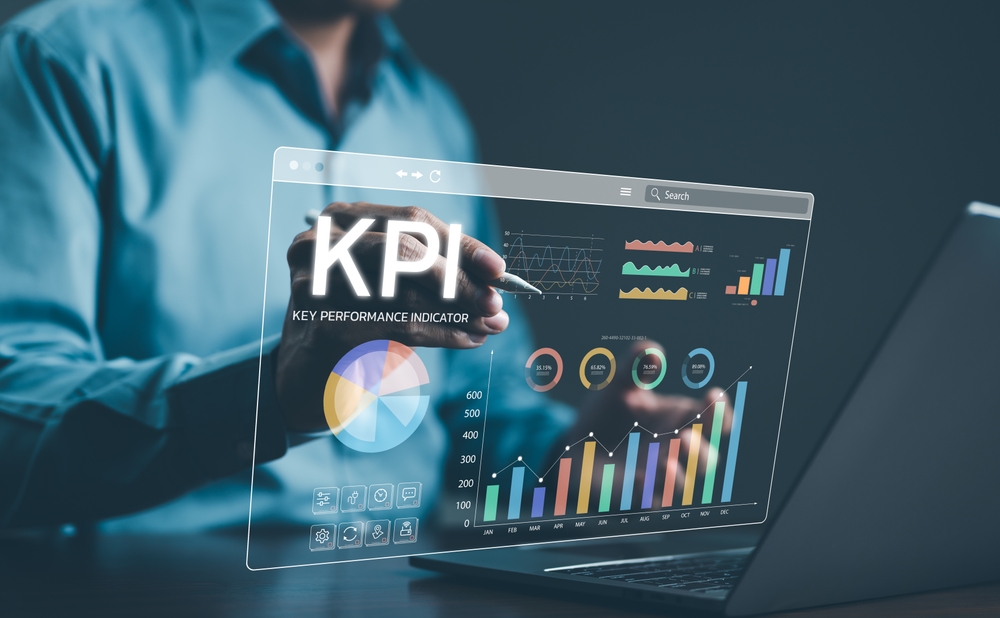What is ROI in Digital Marketing

It is interesting to measure ROI in digital marketing to assess the profitability of one’s campaigns. Contemporary businesses rely so much on online marketing that understanding how to assess your efforts may present pathways to more prolific strategies that will bring in more revenue streams. This blog will discuss the steps to measuring ROI in digital marketing and explain why this matters.
What is ROI in Marketing?
But what do we mean by it? Let us first define ROI before proceeding on to how to calculate it. The ROI in digital marketing is basically just a means of telling how much more you are earning against how much you have spent. In other words, the net profit is divided by the total amount you invested.
Why is Measuring ROI Important?
Understanding digital marketing ROI is important for several key reasons:
- Budget Allocation: Knowing the campaigns that bring better returns will help you properly allocate them.
- Performance Evaluation: It helps in evaluating the performances of different marketing channels.
- Informed Decision: Organizations can decide on their future marketing strategy, provided the data they use regarding ROI in digital marketing is accurate.
4 Steps to Measure ROI in Digital Marketing
From what we have seen, it is paramount that ROI becomes vital in digital marketing; therefore, it is high time we learn how we can achieve that.
Step 1: Define Your Goals
Ask Yourself:
- What are your marketing goals?
- Do you want more sales, recognition, or leads?
It is also easier to gauge your goals and objectives so you can effectively determine the ROI in digital marketing.
Step 2: Calculate Your Total Investment
To facilitate this, start by determining your total marketing investment. This includes:
- Advertising Costs: Estimate your total cost on all ads and campaigns.
- Content Creation: Generating blogs, videos, and other content is expensive.
- Software and Tools: Costs incurred when using marketing automation, analytics, and customer relationship management software.
- Labor Costs: Salaries for people involved in the marketing process who work in a team.
Step 3: Determine Your Revenue
We should estimate to what extent the marketing campaign has driven the revenues. This is precisely where one can identify the sales directly attributable to a campaign. Likewise, you could utilize Google Analytics, which is ideal for your business as it provides conversion and sale information, an essential aspect of your business.
Step 4: Calculate ROI
When you know your total investment and profit, you can simply calculate ROI in digital marketing by following the formula.
- ROI = To find Return on investment, simply divide profit by total investment like Total Revenue / Total investment * 100
To find Net Profit, deduct revenue from total investment. This will indicate your digital advertising ROI.
Example Calculation
Let you pay $5000 for a digital advertising campaign, and you receive $15,000 in sales. Thus,
- Net profit = to find net profit, subtract $15000 – $ 5000
- ROI = to find your Return on investment, divide net profit by total investment and multiply by 100, such as $10,000/ $5000 * 100
Even still, this means that for every dollar you were spending, you were getting two times the value, suggesting that advertising was quite a good ROI in online marketing company.
Tools to Measure ROI in Digital Marketing
The following popular options can be utilized to help you measure your ROI in digital marketing. Here are some of the popular options that could be helpful:
- Google Analytics: Google Analytics is useful for watching the overall web traffic and efficiently tracking conversion rates and sales figures.
- HubSpot: A particular strength of using content marketing through HubSpot is its powerful analysis and reporting functionality, which allows you to review the outcomes of your business’s marketing.
- SEMrush: Semrush is suitable for source analysis and evaluation of the effectiveness of an Internet marketing campaign.
- Kissmetrics: It is used to monitor the conversion and behavior of the customers, enabling you to understand your target group’s consumption pattern.
Factors to Consider When Measuring ROI
While calculating ROI in digital marketing is essential, there are some additional factors to keep in mind:
- Attribution Models: Knowing the channels that make the biggest impact on conversion can assist you in evaluating the right Return on investment. Another way is to turn to multi-channel attribution, which will help get a more detailed view of the marketing efforts.
- Time Frame: A peculiarity of ROI is that it may change with time. Taking measurements over a longer period may be more effective in giving the actual picture.
- Customer Lifetime Value (CLV): This means you should look at how many units you are selling and the potential and value of customers gained from your marketing campaigns in the long run.
Measuring Long-Term ROI
Long-term metrics are not the usual short-term measures employed in determining the effectiveness or otherwise of your online marketing strategies. Almost all marketing strategies, including content or SEO services, are activities that will not show results in the first month; within a few years, however, the change can be revolutionary. Here’s how to monitor long-term ROI:
- Monitor Brand Awareness: Monitor changes to website traffic and social media interactions over time.
- Evaluate Customer Retention: Customer retention rates can be used to evaluate the long-term effects of marketing communications.
- Calculate the Value of Content: Quantify ‘Lead Generation’ and the ‘acquisition’ metrics like ‘Unique Visitors’ from organic search traffic and the ‘WordPress Blog’ conversion rates to understand the role of content in long-term returns.
Using A/B Testing to Measure ROI
Conducting A/B testing may be useful in determining ROI in digital marketing. This means that you can see which version performs better when comparing two versions of a campaign. Here’s how to implement A/B testing:
- Choose a Variable: Select an element that you would like to experiment with, for instance, the email’s subject line or the layout of a landing page.
- Create Two Versions: Create two versions of your campaign where one idea of the first version is changed in the second one.
- Run the Test: Test both versions on the same segment of the target population or market simultaneously.
- Analyze Results: It will also help you know which version has a better conversion rate and will net you more revenue.
Challenges in Measuring ROI
There are some difficulties connected with the evaluation of online marketing ROI. Some of these include:
- Attribution Issues: Attribution across various marketing channels is often challenging.
- Data Overload: At times, there is so much information that it becomes difficult to determine what information is essential to filter out.
- Short Sales Cycles: In some industries, the time required to make a sale may be relatively long, and thus, using the immediate ROI to measure marketing success may not be accurate.
Overcoming ROI Measurement Challenges
The following strategies provide a better way of overcoming the challenges in the measurement of ROI:
- Use Advanced Analytics: Avail tools that provide a better analysis of your campaigns so that you can produce better results.
- Setting Up Proper Tracking: Use conversion tracking and UTM tracking to capture the exact metrics of your campaigns more effectively.
- Customer Journey Mapping: It is preferable to relocate focus towards the customer’s entire journey to allow the conversion to be attributed to the correct channel.
In Summary
Overall, evaluating the effectiveness of digital marketing is rather simple, as you will need to know even the basics to be a successful business on the web. You will know how effective your marketing efforts are by setting targets, identifying total expenditure and revenue, and using an appropriate tool. Thus, you need to remember that ROI in digital marketing is not just a mathematical value but a tool to help you plan the next steps of your activities.
Increase your digital marketing and get more ROI with services at Try Web Design, a reputed web development company. Start measuring your marketing’s digital ROI today and feel the change.




